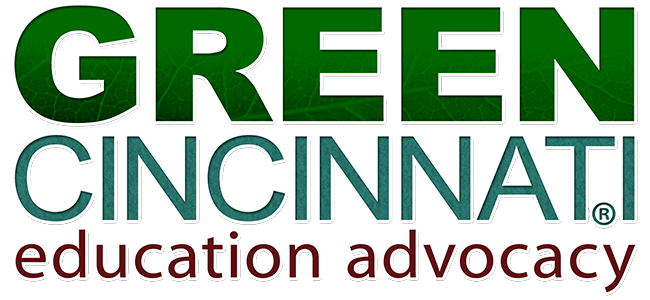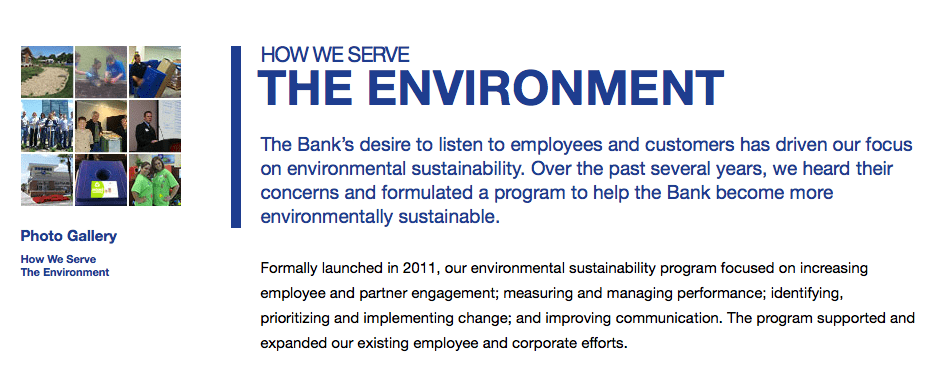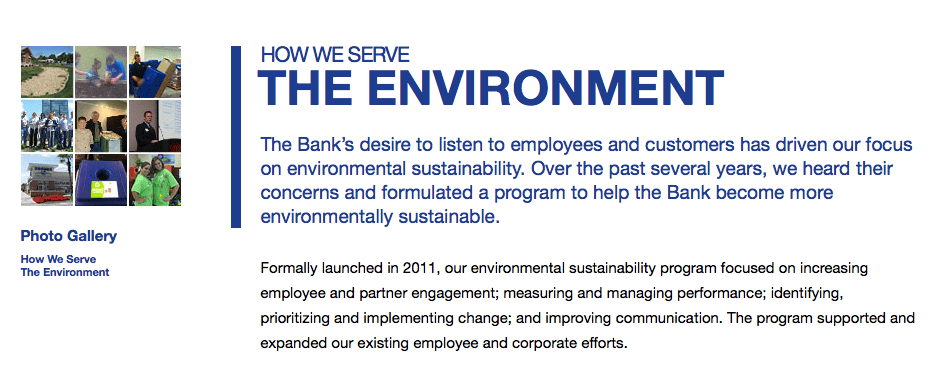Formally launched in 2011, our environmental sustainability program focused on increasing employee and partner engagement; measuring and managing performance; identifying, prioritizing and implementing change; and improving communication. The program supported and expanded our existing employee and corporate efforts.
Energy and Emissions
As a large operator of facilities, we know it is important to improve their environmental performance. We have made measurable progress in increasing our energy efficiency, supporting renewable energy and reducing our greenhouse emissions.
To boost the energy efficiency of our banking centers, office buildings and operation centers, we continued to invest in heating, ventilation and air conditioning equipment, lighting and controls. These investments helped us reduce our 2011 electricity consumption at Fifth Third Bancorp-owned facilities by 32.8 million kilowatt hours or 14 percent relative to 2007. These efforts also helped reduce natural gas consumption at these facilities by 163,800 million British thermal units or 34 percent relative to 2007. Based on the average emissions factors for electric power and natural gas in the United States, these energy savings correspond to a reduction in carbon dioxide emissions of more than 28,400 metric tons or 17 percent relative to 2007 emissions from these energy sources.
Beyond improving the energy efficiency of our existing facilities, we also began learning about opportunities to improve the energy efficiency and environmental performance of our new banking centers. In 2011, two of our newest banking centers earned LEED Gold recognition from the U.S. Green Building Council. We are using our experience with the Sodo Banking Center in Orlando, Fla., and the Wilkinson Banking Center in Charlotte, N.C., to improve the design, construction, operation and maintenance of all our facilities.
 In addition to improving our energy efficiency, we purchased renewable energy certificates (RECs) equivalent to three percent of our projected electricity consumption. Sourced from the Peñascal Wind Power Project on the Gulf Coast of Texas, this purchase supported the growth of renewable electricity generation and offset a portion of our greenhouse gas emissions. Based on this purchase, we were recognized by the U.S. Environmental Protection Agency as a Green Power Partner.
In addition to improving our energy efficiency, we purchased renewable energy certificates (RECs) equivalent to three percent of our projected electricity consumption. Sourced from the Peñascal Wind Power Project on the Gulf Coast of Texas, this purchase supported the growth of renewable electricity generation and offset a portion of our greenhouse gas emissions. Based on this purchase, we were recognized by the U.S. Environmental Protection Agency as a Green Power Partner.
Finally, we continued to participate in the Carbon Disclosure Project (CDP). The CDP is an international not-for-profit group that encourages organizations to measure and disclose their greenhouse gas emissions and their strategies for managing the risks and opportunities associated with climate change. In 2011, we began reporting our carbon dioxide emissions relative to a 2007 baseline. This change and other actions helped increase our disclosure score to 75 on a 100-point scale. We continue to monitor climate change-related developments as we work to improve our ability to manage these risks and opportunities.
Recycling
Fifth Third Bank seeks to reduce the amount of waste we generate by reducing consumption, increasing recycling and diverting materials from the landfill. To reduce consumption, we give our customers a choice of printed or electronic correspondence. Our customers continue to shift to electronic statements and suppression adoption now ranges from 27 to 48 percent depending on the type of correspondence.
One Type of Correspondence

We also recycle paper and other resources. To protect the privacy of our customers, confidential information is always shredded. In 2011, facilities that use document destruction services shredded and recycled 2,400 tons of paper. In addition, an existing program at our Madisonville campus in Cincinnati recycled 199 tons of sorted and mixed office paper and 63 tons of cardboard.
In 2011, we also began to expand recycling availability across our footprint. The expansion started at the LEED Gold Sodo and Wilkinson branches in Florida and North Carolina and expanded late in the year with a series of major changes at our Madisonville campus, home to the George A. Schaefer, Jr. Operations Center and Madisonville Office Building.


More than 5,000 employees work at our Madisonville campus, located just north of Cincinnati. Based on employee interest, we began planning in early 2011 to expand access to recycling. Our original goal was to use the recycling roll-out as a learning experience to inform broader corporate changes in the future.
We soon realized that, because the campus operates on-site food service facilities, we had the opportunity to do more than simply offer recycling of paper products, cans and bottles. We could also collect food scraps and send them to an off-site composting facility. We were excited about the chance to truly demonstrate comprehensive environmental leadership to our employees, customers and partners and subsequently decided to simultaneously introduce food scrap composting and expanded recycling at the campus.
We spent much of 2011 building the necessary infrastructure, obtaining supplies and planning process and logistical changes in facility management, janitorial and food service activities. We also developed a significant communication outreach program to explain the changes to employees and to encourage participation. The new services started rolling out in November to coincide with America Recycles Day.
Employee-Led Efforts
Local Fifth Third affiliates and employees did their part to help the environment in 2011. Occasions like Earth Day were used to raise awareness of environmental issues, demonstrate how everyone can contribute and to clean up and improve our local communities. In South Florida, employees partnered with the Conservancy of Southwest Florida to host an Earth Day Festival and local banking centers also hosted mini-Earth Day expos featuring eco-friendly local businesses and organizations.
Other Bank affiliates made an impact, too. Fifth Third Bank (Kentucky) worked to clean up the Cane Run Watershed, which is part of a walking, jogging and biking trail that is enjoyed by the community living in and around Lexington. Employees at our Madisonville campus in Cincinnati collected and recycled old cell phones to benefit the nearby Bobbie B. Fairfax School and the Jackson Center, which supports people with disabilities. Fifth Third Bank (Southern Indiana) employees replanted the Community Garden of Evansville to promote sustainability and also was the only company to have more than one winner of the 2011 GreenOvation Awards for Beautiful & Sustainable Businesses. Three of the 20 winners were Fifth Third employees and winners were scored based on a mix of outdoor, indoor and good-neighbor best practices.
Our Information Technology department continued to upgrade our servers and began introducing video conferencing to provide an alternative to corporate travel. They also worked with the Cincinnati Zoo to donate more than 2,200 obsolete Blackberry devices to the Zoo’s Project Saving Species and helped place cell phone donation boxes at several of our largest facilities in Cincinnati.
Our Retail and Sourcing departments worked with a supplier to identify environmentally preferable products to clean the specialized equipment used in our banking centers. This helped reduce the Bank’s use of commercial cleaning products that contribute to greenhouse gas emissions while also improving our cleaning procedures and providing other benefits.
The Fifth Third Foundation made a grant to Habitat for Humanity International, Inc. for a statewide green initiative in Kentucky to incorporate green building practices into its Habitat homes. The Foundation also made a $2,500 grant to University Park Development Corporation to support the proposal for a development of a LEED-certified neighborhood in Akron, Ohio.
(12-8-19 URL redirect from lohre.com)


